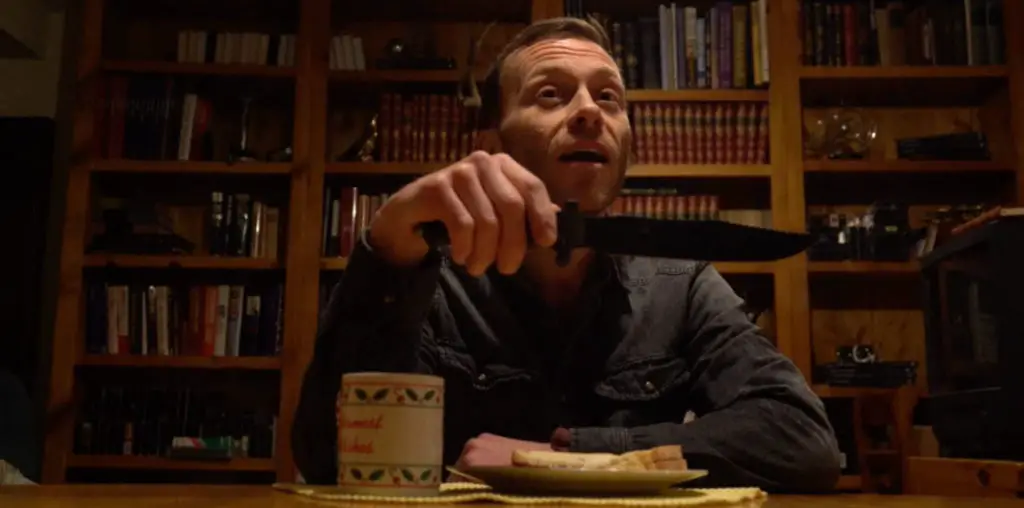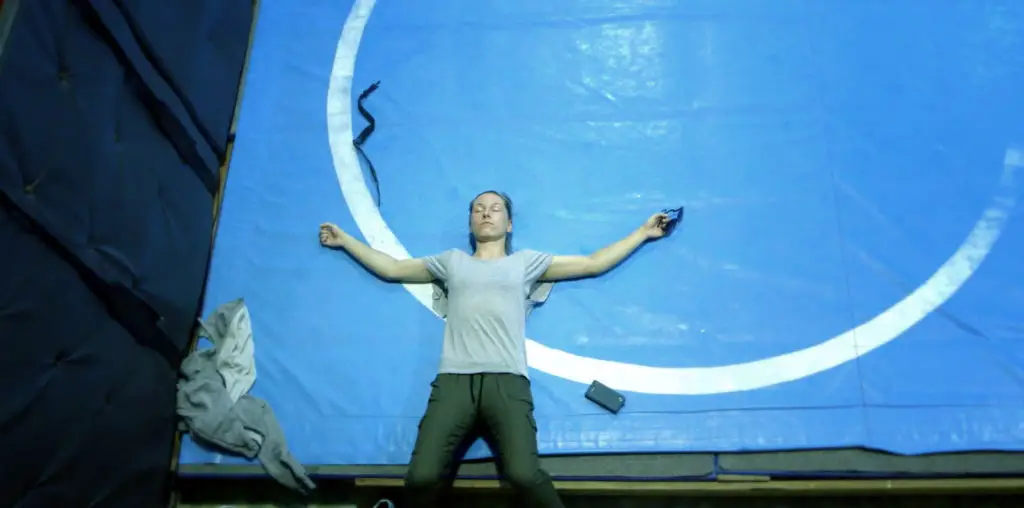
Saturated with faux dust and artificial film scratches, occasional image registration jumps and a picture often pulled out of focus, “Corman’s World—Exploits of a Hollywood Rebel” is a campy look at the by-the-bootstraps career of producer-director Roger Corman. It gathers together footage from many of the over 200 (or 385 or 7 million—as Jack Nicholson claims) cheapies hobbled together by the man who launched the careers of many unknowns now in the upper echelons of show business; men (and a few women) who would eclipse him in fame and fortune. Look, there’s Nicholson espousing the renaissance of low budget movies (“Nobody was really trying to make them good. The real emphasis was on the price.”). And David Carradine commenting that “he (Corman) never lost a dime” making his movies. Director John Sayles cautions the viewer during his recollections, that these were not $20 million films, but $1.98 science fiction movies. Oscar winning director and Corman alum Martin Scorsese chimes in that “we knew taste was out of the question.” Ron Howard, who cut his baby teeth as a director with Corman with “Grand Theft Auto,” cheers us that while Disney pictures can bring out the child in us… then (his hand pump fisting) “so can exploitation!”
And thus first time feature director Alex Stapleton does an admirable job educating her viewers on the man who seemingly launched a thousand faces.
Nudity, car crashes, explosions, gore, a crude sense of humor. These are some of the ingredients you’ll notice as the still active Corman matter-of-factly espouses his philosophy on one aspect of hand—making a horror cheapie (“Dinoshark”) in Mexico in which a creature is chomping on a beautiful girl in a bikini—”We feel that the monster should kill somebody fairly early” then follow up with a series of escalating attacks until the climax. It’s a lot of fun to watch the parade of stars, producers and directors who chat about their association with Roger, while showing trailers and out-takes highlighting the pluses, minuses and antics of guerrilla-style filmmaking.
Roger (and his brother Gene and wife Julie) chat, ever so politely and informatively, about his early career at Twentieth Century-Fox, or how he scrounged up the funding for his first film “Monster from the Ocean Floor.” In that initial production, he was producer, assistant director, a supporting actor, and “everything,” an unseen credit for general grunt work. Little did Roger realize that his second film “The Fast and the Furious” would decades later become a revived franchise for modern audiences. And it was that latter 1955 film which also started the filmmaker’s long association with James H. Nicholson and Samuel Z. Arkoff, executive producers of American International Pictures (then known as American Releasing Corporation).
Anecdotes fly fast and furious. Actor Dick Miller, a Corman staple, remarks that he played both a cowboy and an Indian in “Apache Woman.” Miller notes that “I wound up killing myself in the last scene.” Acting was one aspect of the filmmaking process that Corman did not know (everything else he taught himself), so he took a class. There he met Jack Nicholson, whose self-pronounced “humiliating, but good for me” film debut was in Corman’s 1958 cult classic “The Cry Baby Killer.”
Yes, the sets were simple, the action swift, the makeup dreadful, and the production values slim to none. What do you want in films cobbled together in 7 days? Corman set the bar low, but he always made money. He was a rebel in a system that thought big budgets equal big audiences. And his films, like rock-and-roll in its infancy, catered to the young set, dealing with rebels with and without causes battling authority figures. Stuff real teenagers gobbled up.
(His business acumen did lapse in one area not discussed in the film—his failure to protect many of his works by copyright registration or renewal. You can easily pick up more than a handful of his titles from numerous public domain suppliers on the internet.)
There’s coverage of Corman’s half-dozen adaptations of Edgar Allan Poe works, the disastrously incomprehensible “The Terror,” and the “wonderful commercial failure” of Corman’s first attempt at a serious film (“The Intruder,” featuring William Shatner in his first starring role, dealing with a serious social subject, school desegregation).
Director Stapleton has adequately captured the heart and soul of one of American filmmaking’s saints, with soft spoken yet well delivered interviews caught outdoors, indoors, seated, standing, walking and even while getting a cut in a hair stylist chair (Bruce Dern).
In the world of general run cinema, Corman’s sphere of exploitation was a dependable arena for entertaining the masses and a unfathomable gold mine of future Hollywood talent thru the AIP, then New World Pictures, and other distribution portals. Forget plot. Corman’s world needed sexy, and often naked, women who know how to shoot bad guys out of trees. There’s always room for another explosion. Camp ruled. Pam Grier called the experience “whatever you can do, make do.” For the serious stuff, he’d distribute an occasional Bergman, Truffaut, Kurosawa, or Fellini film, especially when the major studios didn’t want to handle films with subtitles. Thank you, Roger.
The sad times arrived when those same studios started to realize the power of summer. What had generally been a season devoted to exploitation would evolve into what would be filled with juggernaut high-octane tentpole releases, such as “Jaws” and “Star Wars.” The period between Memorial Day and Labor Day soon became the most lucrative of the year, pushing Corman and his low-budget exploitation comrades to rethink their “bread and butter” business model.
It the end, “Corman’s World” is a bittersweet offering, even as the film’s crew follows the dapper man to a reception for a Lifetime Achievement Award, a roasting by the Academy of Motion Picture Arts and Sciences of a man for which Hollywood and independent filmmakers thanked him, as did, through interpreter Quentin Tarantino, “the movie lovers of the planet Earth.”

